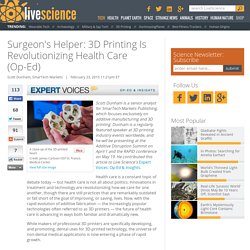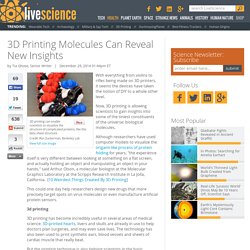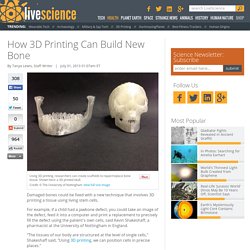

Dubai's going to 3D-print an office building. BigBox: THE Open Source Hi-Spec Desktop 3D Printer! by BigBox3D Ltd. E3D and LittleBox have 15 years of combined 3D printing experience between them.

We know what we're doing. We're constantly testing nearly all the big name printers out there, and have built over 15 different RepRap designs. We're insatiable, and we wanted a machine that had it all: huge print volume; high quality prints; every material: all the fun features and all the convenient extras. That machine just didn't exist, so we had to create yet another 3D printer Kickstarter (!). So here it is. The most striking feature of BigBox is an absurdly huge build volume. Objects built in the plane of the bed are stronger than tall objects built away from the bed so this is a real practical advantage. The motion system designed by LittleBox is rigid, smooth and accurate with fantastic resolution for detailed, accurate printing. We've done things properly - well aligned belts, with proper cable chain on every axis ensures consistent, low drag motion across the whole build volume. Surgeon's Helper: 3D Printing Is Revolutionizing Health Care.
Scott Dunham is a senior analyst for SmarTech Markets Publishing, which focuses exclusively on additive manufacturing and 3D printing.

Dunham is a regularly featured speaker at 3D printing industry events worldwide, and he will be presenting at the Additive Disruption Summit on April 1 and the RAPID conference on May 19. He contributed this article to Live Science's Expert Voices: Op-Ed & Insights. Health care is a constant topic of debate today — but health care is not all about politics. Innovations in treatment and technology are revolutionizing how we care for one another, though there are still practices that are remarkably outdated or fall short of the goal of improving, or saving, lives. Now, with the rapid evolution of additive fabrication — the increasingly popular technologies often referred to as 3D printers — the future of health care is advancing in ways both familiar and dramatically new. What Is 3d Printing - 3d Printers - How 3d Printing Works. An array of additive manufacturing devices at MIT.

The U.S. hopes such technology can give a boost to its manufacturing sector.Credit: 2010, Courtesy of Neil Gershenfeld, Center for Bits & Atoms, MIT A 3D printer cannot make any object on demand like the "Star Trek" replicators of science fiction. But a growing array of 3D printing machines has already begun to revolutionize the business of making things in the real world. 3D printers work by following a computer's digital instructions to "print" an object using materials such as plastic, ceramics and metal. The printing process involves building up an object one layer at a time until it's complete.
One of the 3-D printers at work in the Mediated Matter group at the MIT Media Lab.Credit: MIT | Melanie Gonick The instructions used by 3D printers often take the form of computer-aided design (CAD) files — digital blueprints for making different objects. 3D Printing Molecules Can Reveal New Insights. With everything from violins to rifles being made on 3D printers, it seems the devices have taken the notion of DIY to a whole other level.

Now, 3D printing is allowing scientists to gain insights into some of the tiniest constituents of the universe: biological molecules. Although researchers have used computer models to visualize the origami-like process of protein folding for years, "the experience itself is very different between looking at something on a flat screen, and actually holding an object and manipulating an object in your hands," said Arthur Olson, a molecular biologist at the Molecular Graphics Laboratory at the Scripps Research Institute in La Jolla, California. [10 Weirdest Things Created By 3D Printing] This could one day help researchers design new drugs that more precisely target spots on virus molecules or even manufacture artificial protein sensors. 3D Printing Stem Cells to Build Bone. Damaged bones could be fixed with a new technique that involves 3D printing a tissue using living stem cells.

For example, if a child had a jawbone defect, you could take an image of the defect, feed it into a computer and print a replacement to precisely fill the defect using the patient's own cells, said Kevin Shakeshaff, a pharmacist at the University of Nottingham in England. "The tissues of our body are structured at the level of single cells," Shakeshaff said. "Using 3D printing, we can position cells in precise places. " The technology, which enables scientists to create a custom-fitted body part, is on display at the Royal Society’s annual Summer Science Exhibition this week in London. [7 Cool Uses of 3D Printing in Medicine] To create the bone replacement, the 3D bioprinter creates a scaffold in the shape of the bone, and coats it with adult human stem cells, which are capable of developing into many different tissue types.